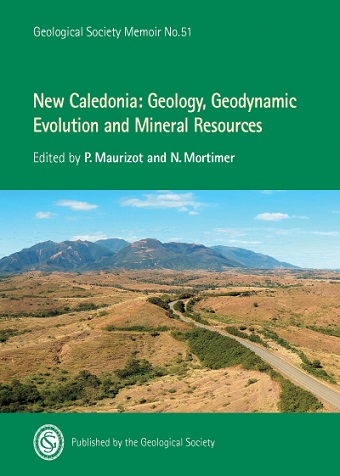
New Caledonia is a small group of tropical islands in the south-western Pacific Ocean and is still a department of France. New Caledonia is an archipelago composed of several islands (Loyalty Islands, Belep Islands, Ile des Pins, Grande Terre), reefs and lagoons. It lies approximately 1500 km east of Australia, 2000 km north of New Zealand and just south of Vanuatu. The islands have had a long geological history that begins with Gondwana’s break up during the Mesozoic. The island’s geology can be segregated into four major rock groups that were subject to accretion, subduction and obduction.
Such an active geological environment and complex geological history provides the basis for the development of the island’s economic geology. The most important component of the mining industry in New Caledonia is nickel production from tropical laterites. These deposits are widespread and cover much of the ultramafic terranes and have been exploited for decades. Major projects include Goro and Koniambo, which are two of the largest producing nickel operations in the world. Other commercial operations produce cobalt and chromium, again as by-products of the ultramafic terranes. Although present in many similar geological environments, platinum group metals and gold are sparingly distributed and currently not economic. Minor occurrences of base metals, iron ores, coal and manganese are also reported—much variability from a small island.
This memoir provides a comprehensive summary of the current knowledge of New Caledonia’s geology, geodynamic evolution, and mineral resources, based on a compilation of published and unpublished information. It comprises 10 research papers, each addressing a geological assemblage or topic. After an introductory chapter and a review of the published geodynamic models of evolution of the SW Pacific, chapters 3 to 5 focus on the main geological assemblages of Grande Terre: the Pre-Late Cretaceous basement terranes, the Late Cretaceous to Eocene cover, and the Eocene subduction-obduction complex—one of the largest and best-preserved in the world. Chapter 6 is devoted to the Loyalty Islands and Ridge. Chapter 7 deals with the mostly terrestrial post-obduction units including regolith. Chapter 8 deals with palaeobiogeography and discusses plausible scenarios of biotic evolution. Chapters 9 and 10 provide a comprehensive review of New Caledonia’s mineral resources.
The editors and authors are to be congratulated on such a large undertaking, particularly the senior editor who has co-authored all the chapters. The volume will interest stratigraphers, sedimentologists, marine geologists, palaeontologists, palaeogeographers, igneous and metamorphic petrologists, geochemists, geochronologists, and specialists in tectonics, geodynamic evolution, regolith development and economic geology.
Reviewed by Rob Bowell
NEW CALEDONIA: GEOLOGY, GEODYNAMIC EVOLUTION AND MINERAL RESOURCES. Edited by P. Maurizot & N. Mortimer (2020) Geological Society Memoir No.51. 285p.
List price: £ 120.00.
Fellow's price: £ 60.00.
W: https://www.geolsoc.org.uk/M0051